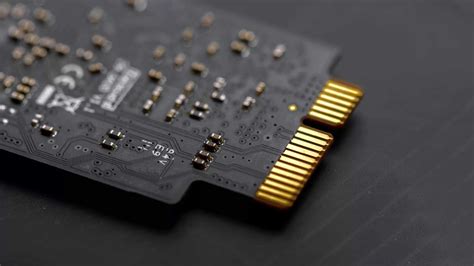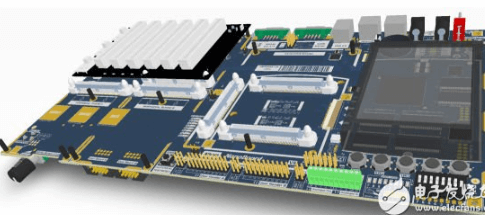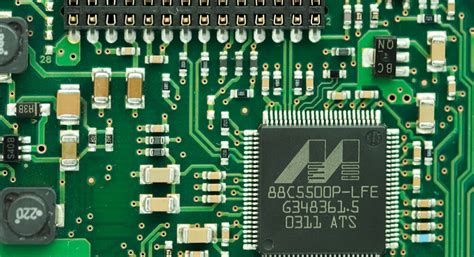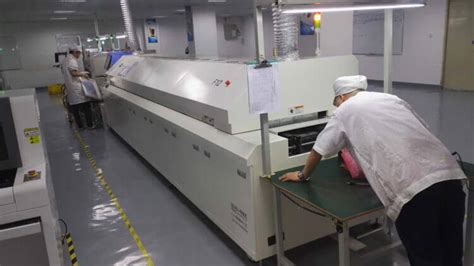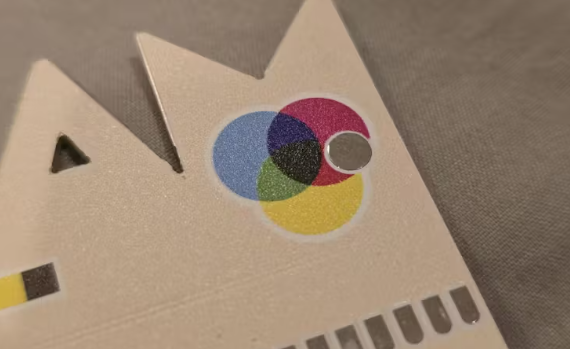Affordable Small-Batch PCB Prototyping Services
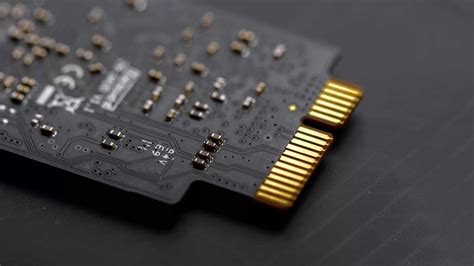
Key Takeaways
When exploring low-cost PCB manufacturing for prototypes, prioritizing services that cater to 1-5 unit batches ensures you avoid overspending on unnecessary volume. PCB manufacturing companies specializing in small-batch production often streamline processes to reduce PCB manufacturing cost, offering competitive pricing without compromising quality. Key factors to evaluate include lead times, material options, and whether assembly services are bundled. For example, some providers integrate PCB manufacturing and assembly into a single workflow, minimizing delays and simplifying logistics.
A critical barrier for startups or hobbyists is balancing affordability with technical support. Reputable PCB manufacturing businesses address this by providing design validation, DFM (Design for Manufacturing) feedback, and responsive customer service—features that prevent costly redesigns. Below is a comparison of common cost drivers in ultra-low-volume prototyping:
| Cost Factor | Budget-Friendly Approach |
|---|---|
| Layer Count | Stick to 2-4 layers unless necessary |
| Material Selection | Use FR-4 instead of specialized substrates |
| Turnaround Time | Opt for standard lead times (3-5 days) |
| Assembly Complexity | Limit components to essentials |
To further reduce PCB manufacturing cost, consider iterative testing. Breaking your design into smaller, testable phases helps catch errors early, avoiding wasted batches. Additionally, partnering with PCB manufacturing companies that offer volume discounts for future scaling ensures long-term savings. For instance, some providers credit prototype costs toward bulk orders, making them ideal for evolving projects.
Finally, transparency in pricing is non-negotiable. Look for providers with real-time quoting tools and no hidden fees for file reviews or tooling. This clarity lets you budget accurately while focusing on refining your design. By aligning your needs with a PCB manufacturing business that values flexibility and efficiency, you can achieve high-quality prototypes without exceeding financial constraints.
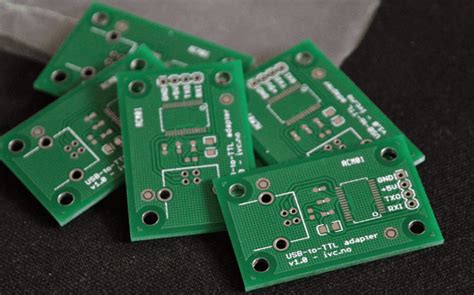
Introduction to Small-Batch PCB Prototyping Needs
When developing new electronics, you often need to test designs iteratively before scaling production. This is where low-cost PCB manufacturing becomes critical, especially for prototypes requiring just 1-5 units. Traditional PCB manufacturing companies often impose high minimum order quantities, making small-batch projects prohibitively expensive. However, advancements in the PCB manufacturing business now enable affordable prototyping without compromising quality. By leveraging specialized services, you can access streamlined processes that reduce PCB manufacturing cost while maintaining precision, such as automated panelization or shared production runs.
The challenge lies in balancing speed, affordability, and reliability. For instance, design validation demands quick turnaround times to identify performance bottlenecks early. Modern providers address this by offering rapid prototyping cycles—sometimes as fast as 24–48 hours—paired with transparent pricing models. This eliminates the need to overpay for unused units or wait weeks for revisions. Additionally, integrating PCB manufacturing and assembly services under one roof further cuts costs, as you avoid multiple vendor markups.
When evaluating options, prioritize providers that specialize in ultra-low volumes. These companies often use advanced fabrication techniques optimized for small batches, such as laser drilling or direct imaging, ensuring your prototypes meet industrial standards. By focusing on PCB manufacturing cost efficiency from the start, you can allocate more resources to refining your design, reducing risks before committing to mass production. This approach not only accelerates development but also fosters innovation by making iterative testing financially viable.
Comparing Low-Cost PCB Manufacturing Services for 1-5 Units
When seeking PCB manufacturing solutions for ultra-low-volume prototypes (1–5 units), balancing affordability and quality becomes critical. Many PCB manufacturing companies specialize in small-batch production, offering competitive pricing structures tailored to iterative design needs. The PCB manufacturing cost for prototypes often depends on factors like layer count, material selection, and turnaround time. For instance, opting for standard FR-4 substrates and limiting layers to 2–4 can reduce expenses significantly. Some providers also bundle assembly services, enabling you to test functional boards without committing to high minimum orders—a game-changer for startups or engineers refining designs.
To compare services effectively, prioritize providers that transparently outline pricing tiers for ultra-low volumes. Look for features like instant online quotes, which streamline budgeting for your PCB manufacturing business or project. Additionally, verify if suppliers offer flexible shipping options (e.g., economy vs. expedited) to align with your timeline and budget. While cost is a key driver, ensure quality isn’t compromised: certifications like ISO 9001 or IPC Class 2 standards indicate reliable output.
Some PCB manufacturing companies further reduce costs by leveraging panelization—grouping multiple designs onto a single panel—to minimize material waste. Others provide discounts for repeat orders, which is ideal if you anticipate multiple design iterations. Always review customer feedback on lead times and post-sales support, as delays in prototyping can stall product development. By weighing these factors, you can identify partners that deliver cost-effective, high-quality prototypes without sacrificing speed or scalability.
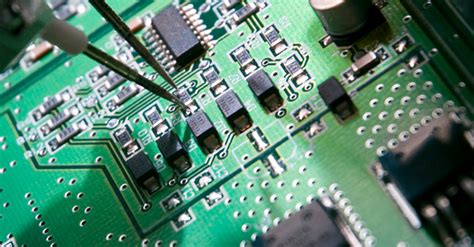
Overcoming Barriers: Affordable PCB Assembly for Prototypes
When developing prototypes, managing PCB manufacturing cost while ensuring quality can feel like a balancing act. Traditional PCB manufacturing companies often impose high minimum order quantities (MOQs), making small-batch production prohibitively expensive. However, specialized providers now focus on ultra-low-volume services, offering PCB manufacturing for 1-5 units without compromising affordability or speed. These services eliminate the need for large upfront investments, allowing you to iterate designs efficiently during the prototyping phase.
A key advantage lies in streamlined PCB manufacturing business models that prioritize flexibility. For example, some providers reduce setup fees by using standardized processes or shared panelization, passing savings directly to you. Additionally, just-in-time assembly options let you order only what you need, avoiding excess inventory. When evaluating partners, look for those offering PCB manufacturing and assembly under one roof—this integration minimizes delays and ensures consistency between design and final product.
"Always request a detailed breakdown of PCB manufacturing cost to identify hidden fees. Transparent pricing models help you budget accurately, especially for iterative testing."
To further cut costs, consider opting for basic materials or standard finishes unless your prototype demands high-performance specifications. Many PCB manufacturing companies also provide design-for-manufacturability (DFM) feedback, helping you avoid costly revisions. For startups or small teams, leveraging these cost-saving strategies ensures you can test multiple design iterations without exceeding budget limits.
Finally, prioritize providers with proven expertise in low-volume PCB manufacturing business operations. Their experience in handling small batches efficiently translates to faster turnaround times and fewer errors. By aligning with a partner that understands the unique challenges of prototyping, you gain access to scalable solutions that grow with your project—from initial concept to full-scale production.

Key Factors to Consider When Choosing a PCB Prototyping Partner
When selecting a partner for PCB manufacturing, especially for small-batch prototypes, you’ll want to balance PCB manufacturing cost with reliability and quality. Start by evaluating PCB manufacturing companies that specialize in low-volume production, as their infrastructure is optimized for 1–5 unit orders. Look for providers offering flexible pricing models—such as tiered rates or reduced setup fees—to avoid overpaying for limited quantities. Transparency in pricing is critical; ensure there are no hidden charges for design reviews, file checks, or material sourcing.
Another priority is turnaround time. While low-cost PCB manufacturing business operations might seem appealing, confirm they can deliver prototypes within your timeline. Some providers offer expedited services at a marginal cost increase, which can be worthwhile if you’re iterating designs quickly. Additionally, check if they integrate PCB assembly into their services, eliminating the need to coordinate with multiple vendors. This streamlines the process and reduces risks like miscommunication or delays.
Quality assurance is non-negotiable. Even for prototypes, your boards must meet functional standards. Verify that the PCB manufacturing partner uses industry-grade materials and adheres to certifications like ISO or IPC. Review their testing protocols—automated optical inspection (AOI) and electrical testing are essential for catching defects early. Don’t overlook customer support: responsive communication ensures issues like design adjustments or delivery updates are resolved efficiently.
Finally, consider scalability. While your immediate need might be 1–5 units, future projects could require larger batches. Partnering with a PCB manufacturing business that supports both prototyping and mid-volume production simplifies scaling without switching providers. By weighing these factors—cost, speed, quality, and scalability—you’ll find a partner that aligns with your prototyping goals while keeping expenses manageable.
Cost-Saving Strategies for Iterative Design and Testing
When iterating on designs during prototyping, minimizing pcb manufacturing cost is critical. Start by optimizing your board layout to reduce complexity—simpler designs often lower material usage and streamline production. Many pcb manufacturing companies now offer design-for-manufacturability (DFM) feedback, which helps identify cost drivers early. For example, reducing the number of layers or avoiding tight tolerances where unnecessary can significantly cut expenses.
Another strategy is to leverage economies of scale even for ultra-low volumes. Some providers bundle multiple prototype iterations into a single order, spreading setup fees across batches. Partnering with a pcb manufacturing business that specializes in small-batch services ensures you’re not overpaying for features you don’t need, like high-speed production lines. Platforms like Andwin PCBA focus on affordable 1–5 unit orders, combining pcb manufacturing and assembly into a single workflow to eliminate hidden fees.
Material selection also plays a role. Opt for standard FR-4 substrates unless your design demands specialized materials. Additionally, verify whether your provider offers panelization for multiple prototypes on a single board—this reduces waste and lowers per-unit costs. For testing phases, consider using partial assemblies or skipping conformal coating until the final iteration.
Finally, prioritize transparency in pricing. Reputable pcb manufacturing companies provide detailed quotes upfront, breaking down costs for fabrication, components, and labor. This clarity helps you allocate budgets more effectively and avoid surprises during iterative cycles. By aligning your design choices with low-volume production realities, you can maintain agility without compromising quality.
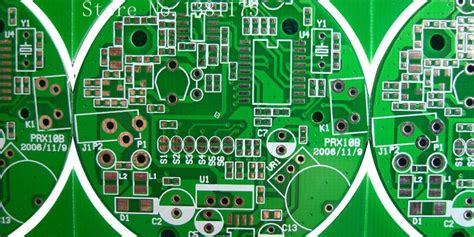
Case Studies: Top Providers for Ultra-Low Volume PCB Production
When exploring PCB manufacturing for prototypes or niche projects, you’ll find several PCB manufacturing companies that specialize in ultra-low volume production (1–5 units). These providers prioritize flexibility, speed, and cost-efficiency, making them ideal for iterative design phases or startups testing new concepts. For example, Company A offers rapid-turn PCB manufacturing services with no upfront tooling fees, reducing PCB manufacturing cost for single-digit orders. Their streamlined process ensures prototypes are shipped within 48 hours, even for complex multilayer designs. Another standout, Company B, combines PCB manufacturing and assembly into a single workflow, eliminating the need to coordinate with separate vendors. This integration not only accelerates timelines but also minimizes errors during the prototyping stage.
Cost transparency is critical in the PCB manufacturing business, and providers like Company C use dynamic pricing models that adjust to your specific design requirements. By leveraging economies of scale for common materials and processes, they keep per-unit costs competitive without mandating bulk orders. If you’re prioritizing affordability, Company D stands out for its tiered pricing—offering discounts for repeat orders or designs that use standardized components. This approach aligns well with iterative testing, where minor design tweaks between batches are common.
A key challenge in ultra-low volume production is balancing quality with PCB manufacturing cost. Company E addresses this by employing automated optical inspection (AOI) and functional testing even for single-board orders, ensuring reliability without inflating prices. Meanwhile, Company F specializes in niche materials like flexible substrates, proving that low-volume doesn’t mean limited capabilities.
When selecting a partner, prioritize providers that offer clear communication, real-time order tracking, and design-for-manufacturability (DFM) feedback. These features help you avoid costly redesigns and ensure your prototype aligns with both technical and budgetary goals. By focusing on PCB manufacturing companies that cater specifically to small batches, you can iterate faster, reduce upfront risks, and bring innovative ideas to market without compromising on quality or breaking the bank.

Integrating PCB Manufacturing and Assembly for Seamless Prototyping
When developing prototypes, combining PCB manufacturing and assembly into a single streamlined process can save time, reduce errors, and lower overall PCB manufacturing cost. Many PCB manufacturing companies now offer integrated services tailored for small batches, ensuring that your 1-5 unit prototypes move from design to functional boards without delays or logistical hurdles. By working with a partner that handles both fabrication and assembly, you avoid the complexity of coordinating separate vendors, which often leads to miscommunication and added expenses.
A key advantage of integrated services is the ability to optimize design-for-manufacturability (DFM) checks early in the process. Experienced PCB manufacturing businesses will analyze your design files to identify potential issues—such as component spacing or solder mask alignment—before production begins. This proactive approach minimizes costly redesigns and ensures your prototype meets performance expectations on the first iteration. Additionally, bundled services often include access to affordable component sourcing, reducing the risk of part shortages or inflated prices for low-volume orders.
Cost efficiency is further enhanced when PCB manufacturing and assembly share the same workflow. For example, some providers use standardized panel layouts to fit multiple prototypes on a single board, cutting material waste and labor costs. This strategy is particularly beneficial for iterative testing, where you might need multiple design tweaks in quick succession. Look for partners that offer transparent pricing models, with clear breakdowns of fabrication, component, and assembly fees, so you can identify areas to trim expenses without sacrificing quality.
Finally, prioritize PCB manufacturing companies that specialize in ultra-low-volume production. These providers often leverage advanced technologies like automated optical inspection (AOI) and rapid-turnaround assembly lines to maintain affordability even for tiny batches. By aligning your prototyping needs with a vendor’s expertise in both fabrication and assembly, you create a seamless path from concept to functional prototype—all while staying within budget.
Future Trends in Budget-Friendly Prototype PCB Services
The landscape of PCB manufacturing is evolving rapidly, driven by advancements in automation, material science, and supply chain optimization. For designers and engineers working on ultra-low-volume projects, these innovations promise to reduce PCB manufacturing cost while maintaining quality. One key trend is the adoption of AI-powered design tools, which minimize errors early in the process, lowering the risk of costly revisions. Modular fabrication platforms are also gaining traction, allowing PCB manufacturing companies to streamline workflows and offer faster turnaround times for prototypes.
Another emerging trend is the rise of on-demand manufacturing models. By leveraging cloud-based ordering systems and distributed production networks, PCB manufacturing businesses can dynamically allocate resources, ensuring small-batch orders don’t get sidelined by larger production runs. This shift not only cuts lead times but also democratizes access to advanced technologies like HDI (High-Density Interconnect) boards, which were once prohibitively expensive for prototypes.
Sustainability is becoming a priority, too. Many providers now use eco-friendly substrates and energy-efficient processes to reduce waste and operational costs. For you, this means lower prices without compromising environmental standards. Additionally, hybrid solutions that combine PCB manufacturing and assembly services under one roof are eliminating logistical bottlenecks, making it easier to iterate designs swiftly.
Looking ahead, expect PCB manufacturing companies to integrate more collaborative tools, such as real-time project tracking and shared design libraries. These features will empower teams to optimize layouts for manufacturability upfront, further slashing PCB manufacturing cost for 1-5 unit batches. As competition grows, providers will likely offer bundled pricing for iterative testing cycles, ensuring your prototyping phase stays agile and affordable. By staying attuned to these trends, you can future-proof your development process while keeping budgets in check.
Conclusion
When seeking low-cost PCB manufacturing for prototypes, balancing affordability with quality is critical. PCB manufacturing companies specializing in small-batch services (1–5 units) eliminate the burden of high minimum orders, allowing you to iterate designs without overspending. By focusing on PCB manufacturing cost optimization—such as streamlined material choices, layer count adjustments, and panelization strategies—you can reduce expenses while maintaining functional prototypes. Many providers now integrate assembly services, merging PCB manufacturing and assembly into a single workflow to minimize delays and logistical hurdles. This approach is particularly valuable for startups or engineers testing concepts, as it avoids the upfront investments typically tied to traditional PCB manufacturing business models. When evaluating partners, prioritize transparency in pricing, rapid turnaround times, and responsive support to ensure your project stays on track. As demand for ultra-low-volume production grows, advancements in automation and material efficiency will likely drive even greater cost savings for innovators in electronics development.
Frequently Asked Questions
How do PCB manufacturing companies keep costs low for 1-5 unit prototypes?
Many PCB manufacturing providers optimize costs by using standardized materials, automated processes, and shared panelization. This allows them to offer competitive PCB manufacturing cost for ultra-low volumes without compromising quality. Some also waive setup fees for small batches or provide discounts for repeat orders.
What factors influence PCB manufacturing cost for prototypes?
Key factors include board complexity (layers, size, material), turnaround time, and additional services like assembly or testing. While PCB manufacturing business models vary, opting for standard specifications (e.g., FR-4 material, 1-2 layer boards) and avoiding rush fees can significantly reduce expenses.
Can I get assembly services with low-volume PCB manufacturing?
Yes. Many providers now integrate affordable assembly with prototyping, even for 1-5 units. Look for companies offering "bare-board + assembly" bundles or modular pricing, which avoids high minimum order requirements. Ensure they support your component sourcing needs to streamline the process.
Are there hidden fees in small-batch PCB manufacturing?
Reputable PCB manufacturing companies provide transparent quotes upfront. However, watch for charges like tooling fees, shipping costs, or expedited service premiums. Always review the pricing breakdown and confirm whether design file adjustments (e.g., panelization) can lower costs further.
How fast can I receive my prototype PCBs?
Standard turnaround for 1-5 units ranges from 24 hours to 5 days, depending on the provider. Some PCB manufacturing services offer expedited options for urgent projects, but prioritize providers with consistent lead times to balance speed and PCB manufacturing cost.
What certifications should I look for in a PCB manufacturing business?
For prototypes, ISO 9001 and IPC-A-600 standards are critical for quality assurance. If your project requires specialized compliance (e.g., RoHS, UL), verify that the manufacturer supports these certifications early in the quoting process.
Explore Custom Solutions for Your Prototype Needs
Please click here to discover budget-friendly small-batch PCB manufacturing services tailored to your design requirements.

